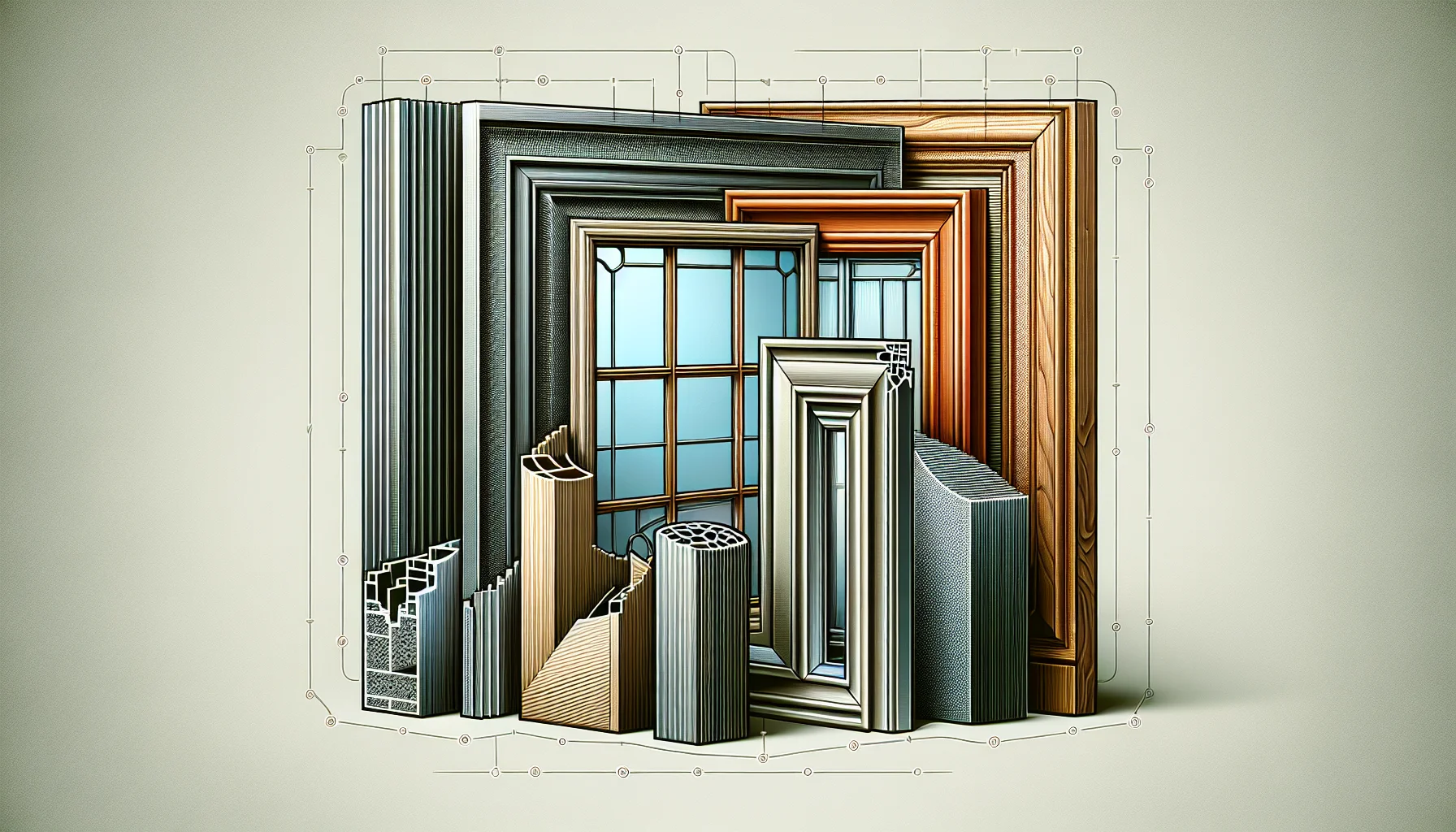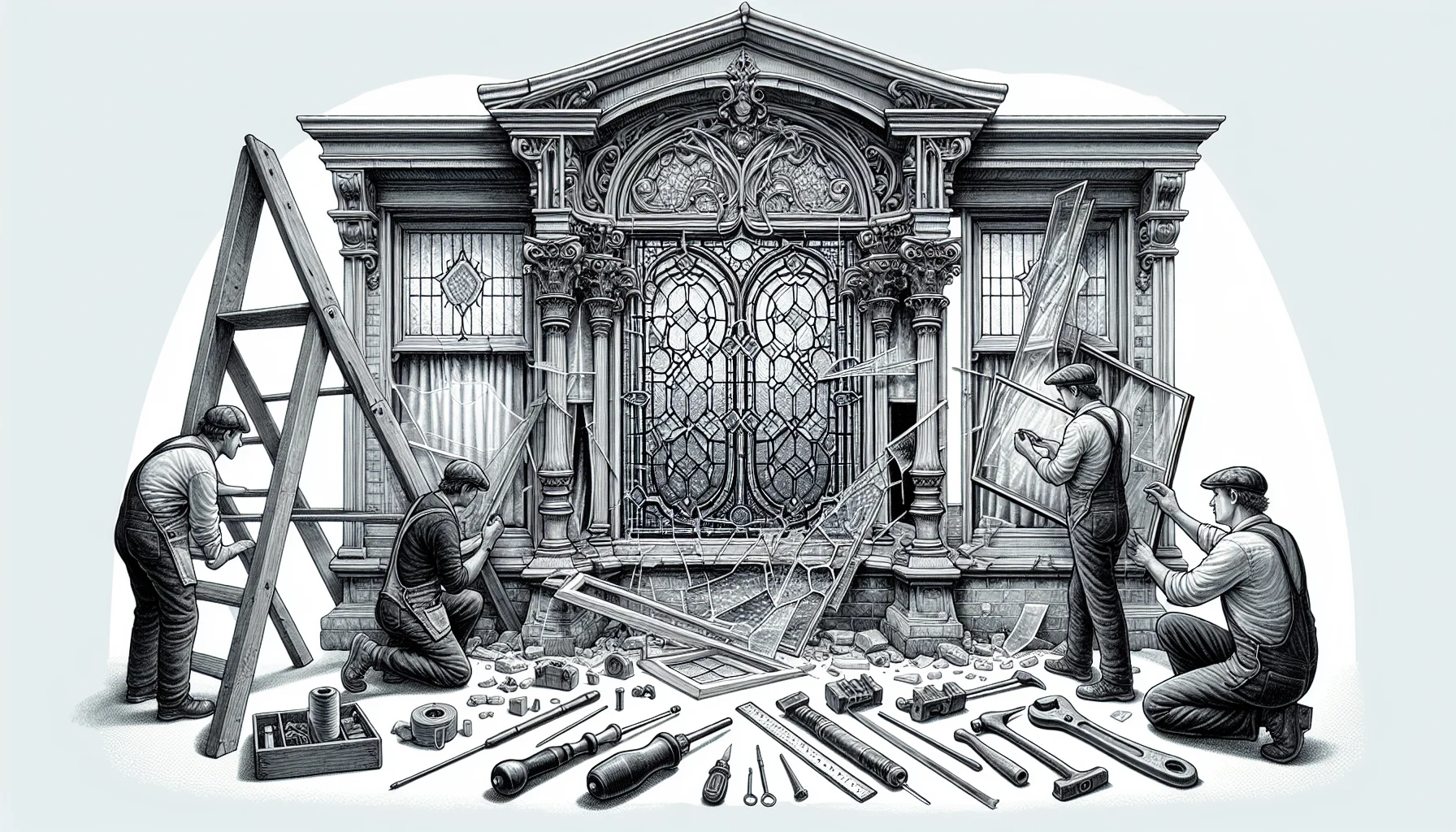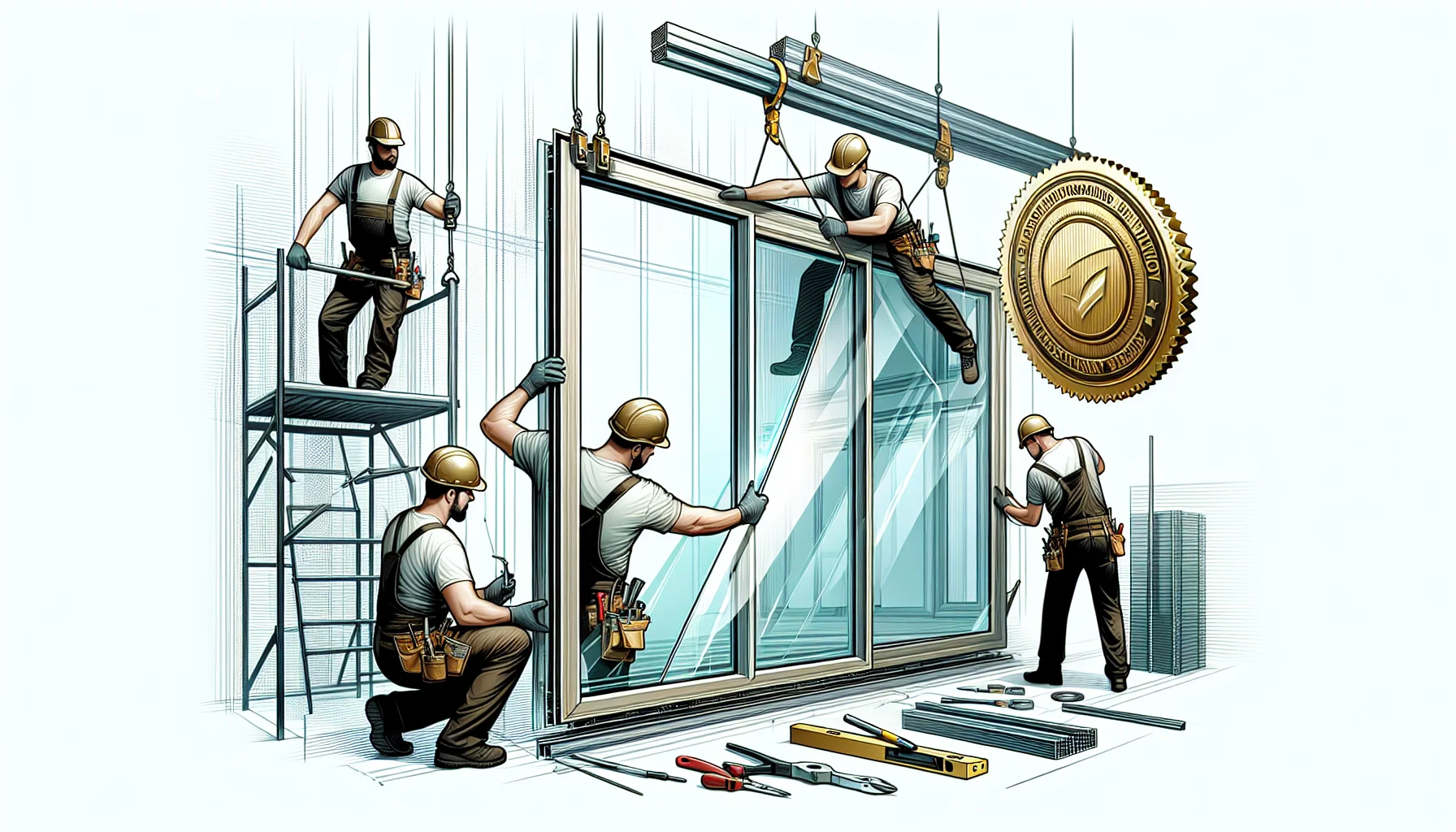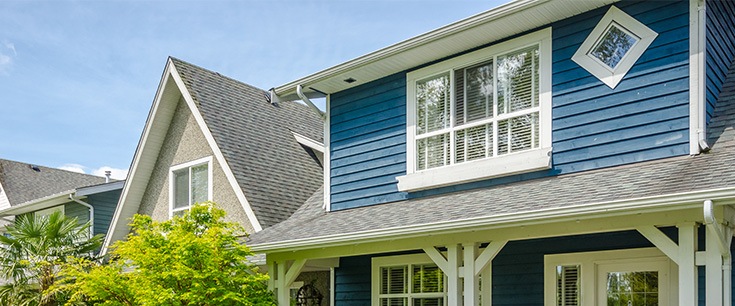Understanding the Real Cost to Replace Windows: 2024 Pricing Guide
If you’re planning to replace a window, understanding the real cost to replace windows is vital. This article eliminates the guesswork by breaking down the factors that influence the price, from material to labor, giving you a clear picture of what to expect. Whether considering a single replacement window cost or multiple, you’ll find the necessary details to navigate the process and manage your budget effectively.

Key Takeaways
- Window replacement costs vary significantly based on factors such as material, size, style, and location, with prices generally ranging from $450 to $1,400 per window, and higher costs associated with larger, hard-to-reach, or intricately styled windows.
- Different types of windows, including energy-efficient, custom, and specialty windows, each have varying costs influenced by their design, materials, and installation requirements, with energy star certified options providing long-term energy savings.
- Labor and installation expenses can widely vary ($100 to $400 per window), with professional installation recommended for guaranteeing proper fit and avoiding future issues. You can accrue additional savings through tax credits, rebates, bulk discounts, and wise timing when seeking replacement services.
Window Replacement Cost Factors

The cost of window replacement can be influenced by a multitude of variables. The type of material used for the window frame, along with the size, design style, and the placement of window location within your property all play pivotal roles in shaping the overall expense incurred. Typically, you could anticipate spending between $450 to $1,400 on each window. Being well-informed about these elements will guide you towards making savvy choices during this process.
When delving into window installation expenses there are particular factors that may cause significant fluctuations in pricing.
- Your selection of material for the window frame
- The specific architectural styling of the windows
- Window dimensions
- Installation site within your dwelling
Bear in mind that larger-scale windows or those situated in hard-to-access areas might necessitate more intensive labor efforts which can incrementally raise costs associated with their installation.
Material
The cost of window replacement varies significantly depending on the material used. The options full frame replacement is available and their respective price ranges are as follows:
- Aluminum frames: an economical choice, with prices from $200 to $800 each
- Vinyl frames: Range in cost from $300 to $1,200 per unit
- Wood frames: come at a premium, costing between $700 and 3$1,800 per window
- Composite frames: situate within a moderate pricing bracket between $500 and 3$1,200 for each frame
-Fiberglass frames:$500 to$1500
When selecting the appropriate window material for your home’s window replacement needs, consider both your budgetary constraints and the necessary requirements.
Vinyl windows stand out as an economically friendly option. They typically incur costs ranging from $300 to 900.Of a similar nature, composite windows average about $600-$15000.While fiberglass windows know for their strength potential insulating properties, they may be replaced with aluminum windows an expense varying between#700 and &1400 per piece.
In terms of maximizing value,fiberglas windows paired with insulated glazing that carries energy star rating may warrant recommendation due to long term benefits despite initial expenditure exceeding those of more basic alternatives.Conversely, vinyl windows present a compelling compromise offering reasonable affordability coupled with commendable functionality, particularly when chosen models include insulation features and bear Energy Star Certification.
Size
The dimensions of your window are a significant factor in calculating the total expense involved with its replacement. Due to the need for more materials and greater labor efforts, replacing larger windows is associated with higher costs to replace windows.
Fundamentally, it can be expected that the replacement costs for bigger windows will surpass those associated with smaller ones. When contemplating an upgrade to larger windows, it’s essential to account for these extra expenses within your financial planning.
Style
The replacement cost of your windows can vary depending on their style, which commonly includes:
- Single hung windows
- Double hung windows
- Casement windows
- Bay windows
- Circle windows
- Transom windows
- Garden Windows
-Jalousie Windows
Each window design is associated with a window brand average cost specific price range.
For an economical choice, especially when installing on the lower level of a home, single hung widows are advantageous because they feature one movable bottom sash along with a stationary upper sash. In contrast to single pane windows only, double-hung ones come at a higher expense due to their two operable sashes.
Installation labor costs for bay windows tend to be more substantial owing to the complex nature required by wood windows and its structure that extends out from the side facade of the house.
Location
The position of a window can also contribute to your cost to replace windows. Windows that are difficult to access could require unique equipment and extra manpower, which would inflate the total expenditure. Replacing existing windows, in various sections of a house—such as bedrooms, corridors, and kitchens—may carry different price tags due to the usual extent of aesthetic enhancements made in these areas.
Specifically regarding basement window installations, they usually fall within a price bracket of $250 to $700. This cost may increase when it comes to installing egress windows that serve as emergency exits.
Types of Windows and Their Expense

The cost to replace windows varies depending on their type. Each category, including energy-efficient windows, custom windows and unique specialty designs, offers a range of benefits at various price levels. Casement window prices fluctuate according to the materials used in construction, which include:
- vinyl
- wood
- aluminum
- composite
- fiberglass
These material choices significantly influence their overall costs.
Prices for standard casement windows usually fall between $600 and $1,400. Smaller dimensions such as 24-by-36 inches may start as low as $262, while egress casement types necessary for safe exit during emergencies can range from about $430 up to around $1,300. Renowned manufacturers like Andersen, Jeld-Wen and Pella provide an assortment of cases with costs affected by size specifications along with variations due to standard or tailor-made offerings.
It is also worth mentioning that other styles like double-hung or bow-windows bear different pricing structures just like bespoke window options where each begins roughly at the thousand dollar mark. Factors influencing these expenses are material quality coupled with features such as lamination or tints. Nevertheless it’s notable that less typical designs encompassing bay layouts, emergency exits (egress), bows shape, ceiling installations (skylights) and patios variants (garden) all leading to higher priced glass block solutions often emerge among the most costly alternatives available.
Energy-Efficient Windows
Windows that are designed to be energy efficient offer enhanced insulation and sound dampening capabilities. Windows with double or triple panes reduce external noise and enhance a home’s acoustic environment. They also prevent cold drafts in winter and excessive heat and humidity in summer, while maintaining ideal indoor temperatures and allowing natural light.
Such energy-efficient windows have been shown to boost thermal efficiency by up to 80%. Equipped with low-e glass coating, argon gas fills, and occasionally incorporating triple pane technology for superior insulation strength — these features maximize their effectiveness. For optimal energy conservation benefits, selecting Energy Star-rated windows is advisable because they include low-emissivity insulating glass with inert argon gas inserted between layers window glass.
Although installing more intricate multi-paneled models can escalate costs due to sophisticated materials needed along with elaborate installation techniques. Expenses for premium low-E coated models range from $300 to $1,000 per individual window unit.
By choosing varieties replace windows like wood-frame or picture style energy-efficient windows for replacement purposes not only garners substantial cuts in power consumption, but also aids environmental preservation, resulting in reduced household utility expenditures over time.
Custom Windows

In cases where the current window frame and trims exhibit significant damage, the opening is not of a standard shape, or there’s a preference for a distinct style of window, custom windows become necessary. Historic homes often necessitate bespoke window replacements to keep picture windows in line with the period-specific architectural design and materials crucial for preserving their originality and charm.
While it might be more costly to have customized windows installed in heritage properties due to the heightened care needed and specialized knowledge required to protect both appearance and structural soundness, this investment typically proves its worth by augmenting both the beauty and market value of such estates.
Specialty Windows

Windows with distinct characteristics such as glass block windows, skylights, and floor-to-ceiling installations enhance a space but are associated with increased replacement expenses. The substantial dimensions of floor-to-ceiling windows contribute to their higher replacement costs, which vary between $700 and $6,000.
In the case of skylight windows, expect to pay anywhere from $800 to $2,500 for replacements. This is largely due to the specialized dimensions and the intensive labor involved in their fitting. Conversely, glass block windows present an economically viable choice that serves both privacy and visual appeal purposes, bearing installation charges in a range from just about $60 up to approximately $840.
Labor and Installation Expenses

The expenditure associated existing window frame along with the labor and setup is a crucial element of the overall window replacement cost. For retrofit installations, labor costs range from $100 to $300 for each window. Some firms might levy as much as $400 per window for more intricate projects.
Fluctuations in labor charges can be substantial depending on how complicated an installation job gets. This complexity could depend upon various factors such as the number and style of windows being installed or difficulties posed by less accessible spots that necessitate extra equipment and time – all potentially pushing up the price. Businesses must recognize that locations within urban areas may see heightened labor rates correlating with increased living expenses.
Nevertheless, opting to work with well-known window replacement companies could prove financially advantageous since these entities frequently secure preferential pricing arrangements with leading window manufacturers due to their established relationships.
Professional vs. DIY Installation
Professional window installation offers benefits such as expert handling of unforeseen issues, a wide range of window styles, and improved safety measures for installing large or elevated windows. Conversely, a DIY approach may incur additional costs for tools, cleanup equipment like dumpster rentals, and safety gear such as ladders and scaffolding.
DIY window replacement without proper experience can lead to air and moisture leaks, as well as mold growth, potentially voiding your manufacturer warranty and causing further costly issues. The complexity increases, particularly with large or heavy panes or difficult-to-reach locations, making it financially wiser to hire professionals.
Electing to undertake window replacement by oneself could culminate in an approximate 15% savings on total replacement costs—a noteworthy fiscal benefit compared with hiring professionals for the job.
Additional Services
In the process of replacing windows, it may be necessary to implement extra insulation or weatherproofing measures. This could entail the application of weatherstripping, integrating laminated glass, and employing low-e coatings as well as tinting to improve energy efficiency. Weatherstripping costs for windows typically fall between $150 and $450.
Window replacement can incur additional charges for discarding old materials and cleaning up afterward. Disposal fees often lie in the range of $50 to $100, but might fluctuate based on your locality and specific waste management services used. To prevent unforeseen expenditures, these ancillary costs should be included in your initial budget planning.
Saving Money on Your Cost to Replace Windows
The expense associated with window replacement can initially appear intimidating. Implementing certain measures can lead to financial savings. To minimize costs:
- Solicit and compare price estimates from a variety of companies specializing in window replacements.
- Purchase during slower business periods when these same window companies might offer reduced prices or special deals.
- Opt for vinyl windows which are not only cost-effective but also provide excellent energy efficiency.
Adhering to these steps could render both the acquisition of replacement windows and the process of replacing them with new windows much more economically viable.
Replacing multiple windows together can lead to discounts on both materials and labor due to volume pricing. By selecting energy-efficient windows and leveraging tax credits or rebates, you can further reduce overall expenses for the installation. This includes options like double-glazed windows, which minimize future heating and cooling costs, resulting in significant long-term savings on energy bills.
Bulk Discounts reduce Cost to Replace Windows
Buying windows in bulk directly from manufacturers typically yields discounted prices because of the volume purchase. Homeowners can Reduce costs by joining forces with their neighbors and entering into community bulk-buying agreements, securing even more favorable rates from window suppliers.
Tax Credits and Rebates reduce Cost to Replace Windows
Homeowners who install energy-efficient windows might qualify for federal tax credits. Local rebates and incentives specific to energy-efficient window replacements can be located in the Database of State Incentives for Renewables and Efficiency (DSIRE).
Homeowners are encouraged to consult DSIRE and search for any state or municipal government programs that offer incentives to leverage these financial opportunities related to increasing home energy efficiency.
Summary
In summary, the expense associated with window replacement can fluctuate widely due to a variety of determinants. The full cost per window is influenced by the material used, dimensions, design choices, geographic location, and specific types of windows chosen. It’s recommended to have windows professionally installed to ensure they are fitted correctly and that their warranty remains valid. If one has the necessary skills for precise installation, taking on the project oneself could save money.
Opting for energy-efficient windows with bulk purchase deals and tax credits, despite the initial cost, can lead to future savings. Considering these factors not only boosts curb appeal and property value but also cuts long-term energy bills and window replacement costs.
Call See-Thru Windows and Doors for your best price to replace Windows on your home.
Frequently Asked Questions
Is it cheaper to replace all windows at once?
Indeed, opting for a simultaneous replacement of all windows typically results in cost savings as window replacement firms commonly offer discounts on both materials and labor when purchased in larger quantities.
What factors influence the cost of window replacement?
The materials of the windows, their sizes, the styles chosen, and their installation locations significantly determine the overall expenses for window replacement.
How does the size of the window affect the cost of window replacement?
The replacement expenses for larger windows will be greater as they require additional materials and increased labor effort.
How can I save money on window replacement?
In order to reduce expenses on your cost to replace windows, it is advisable to seek out bulk purchase discounts, tax credits, and rebates while opting for energy-efficient windows. Doing so can lead to considerable cost savings.
What is the difference between professional installation and DIY installation?
Professional installation guarantees expertise and safety, while DIY may save costs but risks installation errors.
Before making a decision, evaluate your own abilities as well as the complexity involved in the task at hand.



